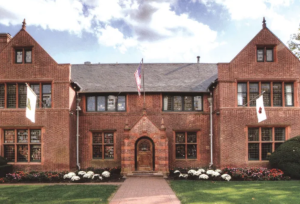
If you have heard about the Eating Clubs at Princeton and other elite colleges, their reputation is often similar to the power of fraternities and sororities to group students off-campus by social rank.
Fascinatingly, I discovered that the origin of Eating Clubs was actually quite pragmatic, an effort by the less wealthy students to collectively figure out how to pay for their food.
Here is how President Wilson described the clubs, a reputation many folks have been aware of through the years, “Wilson was no great fan of the eating club system, which had begun in the mid-nineteenth century. He felt it drew energy, attention, and interest away from academics toward the social life of the college, and had a certain “snobbish” character about it. Wilson felt that the clubs’ allure overshadowed the college experience, as “it absorbs the attention and all the planning faculties of the undergraduate because all social ambitions turn upon it…His thought is constantly fixed upon that object throughout the first two years of his university course with a great intensity and uneasiness whenever he thinks either of his social standing, his comradeships or his general social consideration among his fellows.“ About a third of each class would not obtain membership to a club. As Wilson saw it, “their lot is little less than deplorable” because they were then, for their remaining two years, excluded from the central social life of campus.”

Here, however, is how the origin of these clubs was described by Thelin in his history of higher education book, “Many lower-income colonial college “students often had to fend for themselves, finding lodging off campus in private homes or boardinghouses – a feature of campus life that thwarted the administration’s ability to control student conduct. Similarly, one finds at Yale, Princeton, and other colleges a mix of arrangements for meals. Not everyone dined at commons. Students often formed “eating clubs,” transient and highly pragmatic arrangements whereby a group of friends banded together to pool resources, hired a steward or cook, and rented a dining room near campus. Years later such associations might crystallize into prestigious social organizations, but in the 1800s they had not yet been elevated to this status.” From Thelin’s History of American Higher Education
Pictured below is one of the prestigious eating clubs described by Woodrow Wilson at Princeton. These did not begin to emerge until the mid-1800s and often ended up having housing built for them (the link above is an entire book on the Eating Club history at Princeton.)

